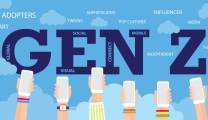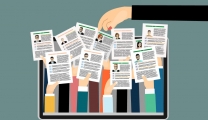What is an intake meeting?
The primary goal of this meeting is to get to know your client better and understand their expectations for the recruitment process.
Then, keeping the metrics in mind, the recruiter can set some templates for job ads on platforms such as LinkedIn, Indeed, etc., and kick off the whole process.
It’s a chance for you to learn about the company culture, the job title and requirements, and the ideal candidate profile.
Top benefits of setting up intake meetings
1. Helps set clear expectations
Intake meetings can be instrumental in exploring and mediating the set expectations of your client and ensuring both groups are singing from the same hymn sheet.
By defining roles, responsibilities, and timelines, you can avoid potential misunderstandings and secure a smooth talent acquisition process.

2. Creates an efficient recruitment process
With a comprehensive understanding of the job requirements and client preferences, recruiters can deploy an applicant tracking system to streamline the sourcing process for qualified candidates.
This efficiency can lead to faster recruitment, a better candidate experience, and a higher success rate in securing the right candidate.
3. Fosters enhanced collaborations
Intake meetings foster a collaborative approach between the recruiter and the hiring manager.
This partnership can lead to more informed decision-making, a smoother hiring process, and certainly successful recruitment, but more importantly, a better working relationship for future referrals.
Sample questions for intake meetings
Now that you’re well aware of the benefits, it’s time to start planning your intake meeting. Here are some sample questions to get you started:
1. Understanding the job
Can you describe the job requirements in layman’s terms? I’m not well-versed in HR jargon.
What’s the most exciting part about this job? We want to know what makes this opportunity stand out!
Can you tell us a story about a previous hire who was successful in this role? We love a good success story!
2. Company culture and environment
What’s the dress code like? Can one wear flip-flops to work?
What’s the team’s favorite office snack? Is it Doritos or Cheetos?
Does your office have a fun tradition or event that everyone looks forward to every year? We want to know what to sell!

3. Ideal candidate profile
Can you describe the ideal candidate in three words or less? We love a good challenge!
Are there any personality traits or soft skills you’re looking for in a candidate? Outline the variable nice-to-have competencies.
If the new hire were a superhero, who would they be and why? We need to know what we’re hunting for!
4. Interview process and timeline
What’s the most creative interview question you’ve ever heard? Can we steal it?
How many rounds of interviews are there, and will snacks be provided? Talent gets hangry!
Can we make a quirky recruitment video to show to the candidates? We promise we won’t embarrass you too much!
5. Salary and benefits
Could you please provide us with a specific salary range for this position? We need to prepare our recruiting & sourcing strategy accordingly! For we might have to hit the floor for a dance-off, which is salary negotiations.
What’s that unique benefit you offer your employees?
Suppose the salary for this position were a pizza; what toppings would it have? We need to know the delicious details!
It is essential to establish that the client and the recruiter are not merely business associates but team members aiming for a common goal.
Using these sample questions, you can conduct an effective intake meeting that aligns with your client’s expectations and sets the stage for a fruitful partnership.
This ensures there is no need for follow-up queries on job descriptions, and the work can be carried out with clarity and no delay.
So, put on your best recruiter hat, grab a cup of coffee (or tea, we don’t judge), and get ready to impress your clients with your intake meeting skills. Happy recruiting!












Replies to This Discussion